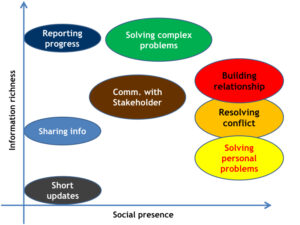A black hole for budget in innovative organizations?
Although complexity is not really perceived as a sensational subject to write about, billions of Euros are sunk in the industry due to unnecessary complexity. It makes one wonder why this subject does not get more attention in many organizations despite the ongoing pressure on cost.
It has lingered in organizations for decades and a lot of leaders complain about it; however, not many have really done a lot about it. If not managed carefully, a rather simple product portfolio can turn into a mess and suck a lot of energy into the administration of it. Sometimes complexity’s nature seems very close to that of cancer. Initially, it is very hard to detect. However, once it accelerates its growth it takes very drastic measures to reign it in and get control over it. Very often a person suffers very heavily from this chemical and/or radiological ‚warfare‘. Companies‘ viability and economic future could suffer in the same way if previously uncontrolled complexity is massively battled or suffocated all of a sudden. In contrast to cancer -which can only be malignant- complexity can not only destroy but also create value if managed in the right way within appropriate structures. To ignore it completely could be fatal.
Beginning of June, Professor Mailk, a well known Swiss management guru, suggested at the Swiss Economic Forum that the future of any economy in Europe will be influenced by ever increasing complexity. One key driver for R&D will be the continuous growth of personalized products. Yet, how do we know what part of the complexity creates and what part destroys value?
It is a core challenge to separate the one from the other and develop technology strategies in such a way that value creating complexity is managed well without neglecting key customer needs. This is key in portfolio management as the seeds for a lot of complexities are sown in R&D.
How often do you review complexity in a structured way?
How often is it left to chance?
How often do you argue about complexity without having real transparency of the situation?
Some organizations experimented with complexity charges on every new product which seemed to make sense at first glance. However, all it does is create another distortion of reality as it is often an arbitrary construct which is not anchored in real data. Transparency has not been created. In the worst case, these charges kill highly innovative products which could have been the company’s ‚Blockbuster‘.
I consider the following proverb appropriate in this context: Only those who care for their seedlings appropriately and learn how to prune the young trees will have heavily laden grown tress in their garden. (unknown source)
A first and important step is to understand the impact of complexity in the organization and product portfolio. As I don’t want to pretend to be an expert I have invited experts from AT Kearney to contribute with an article on the subject of complexity management. You can get this article from my download area.


